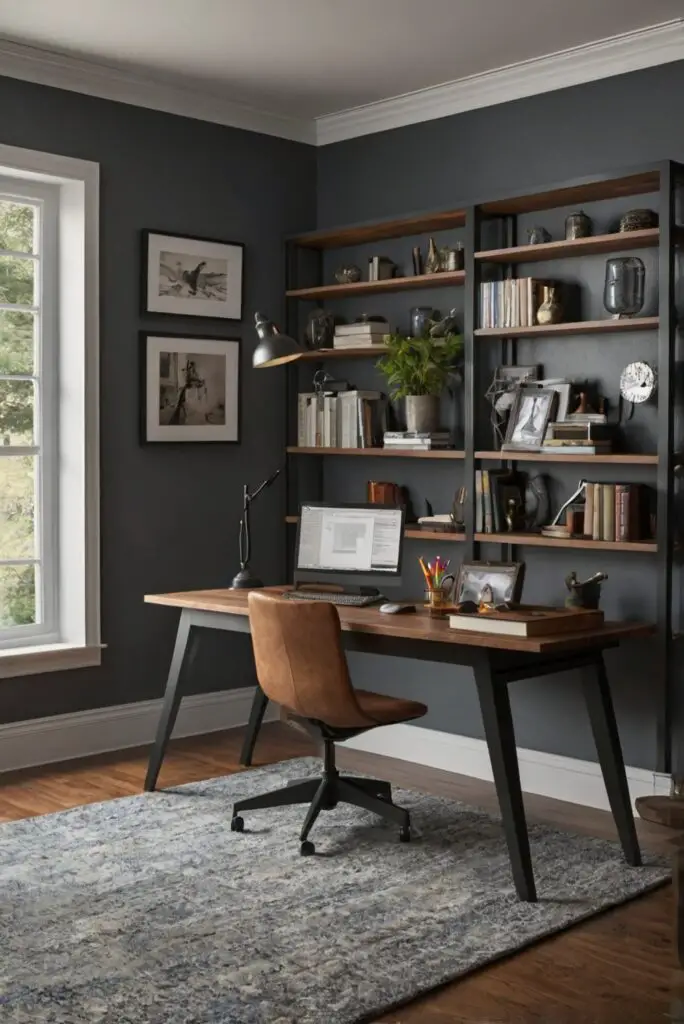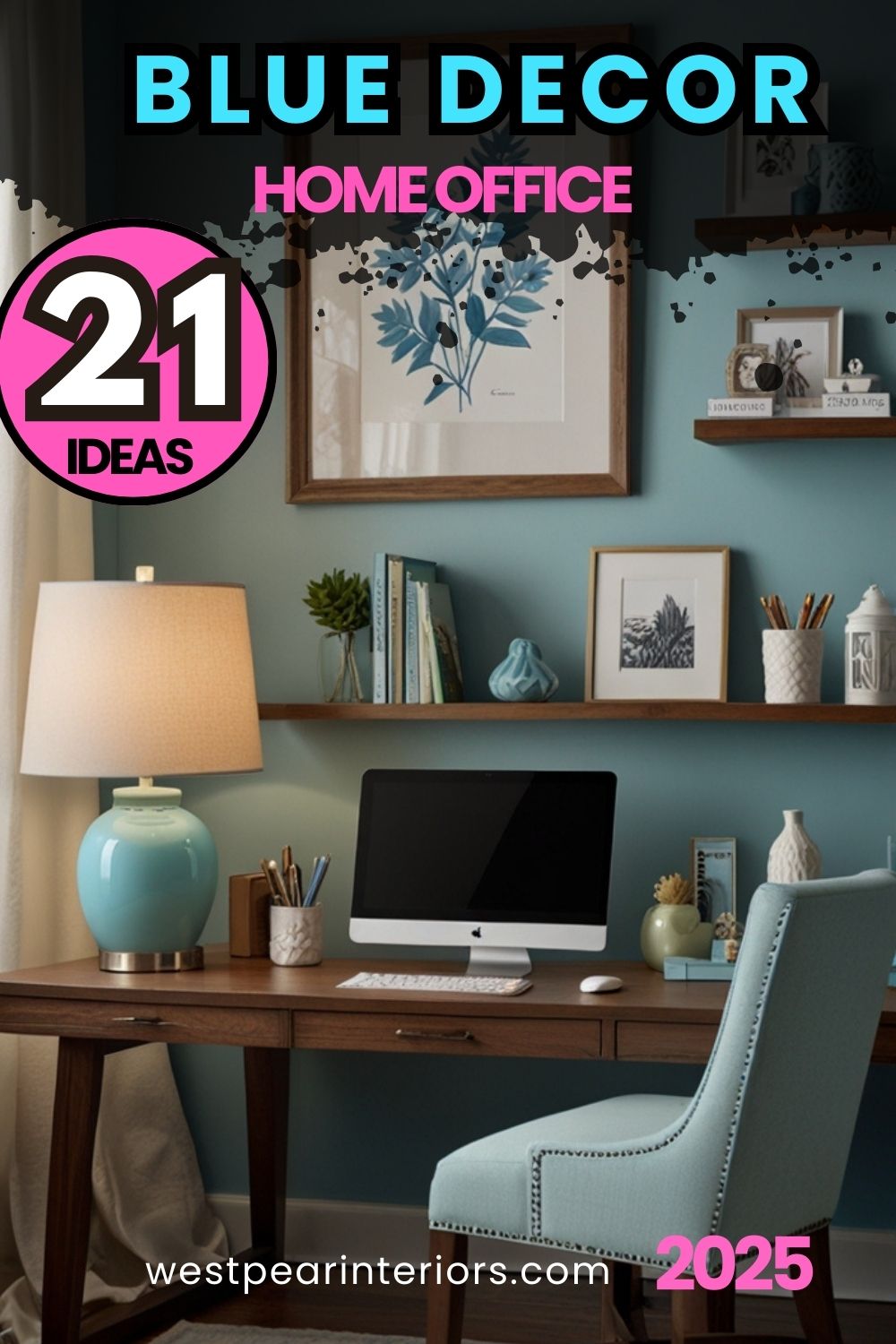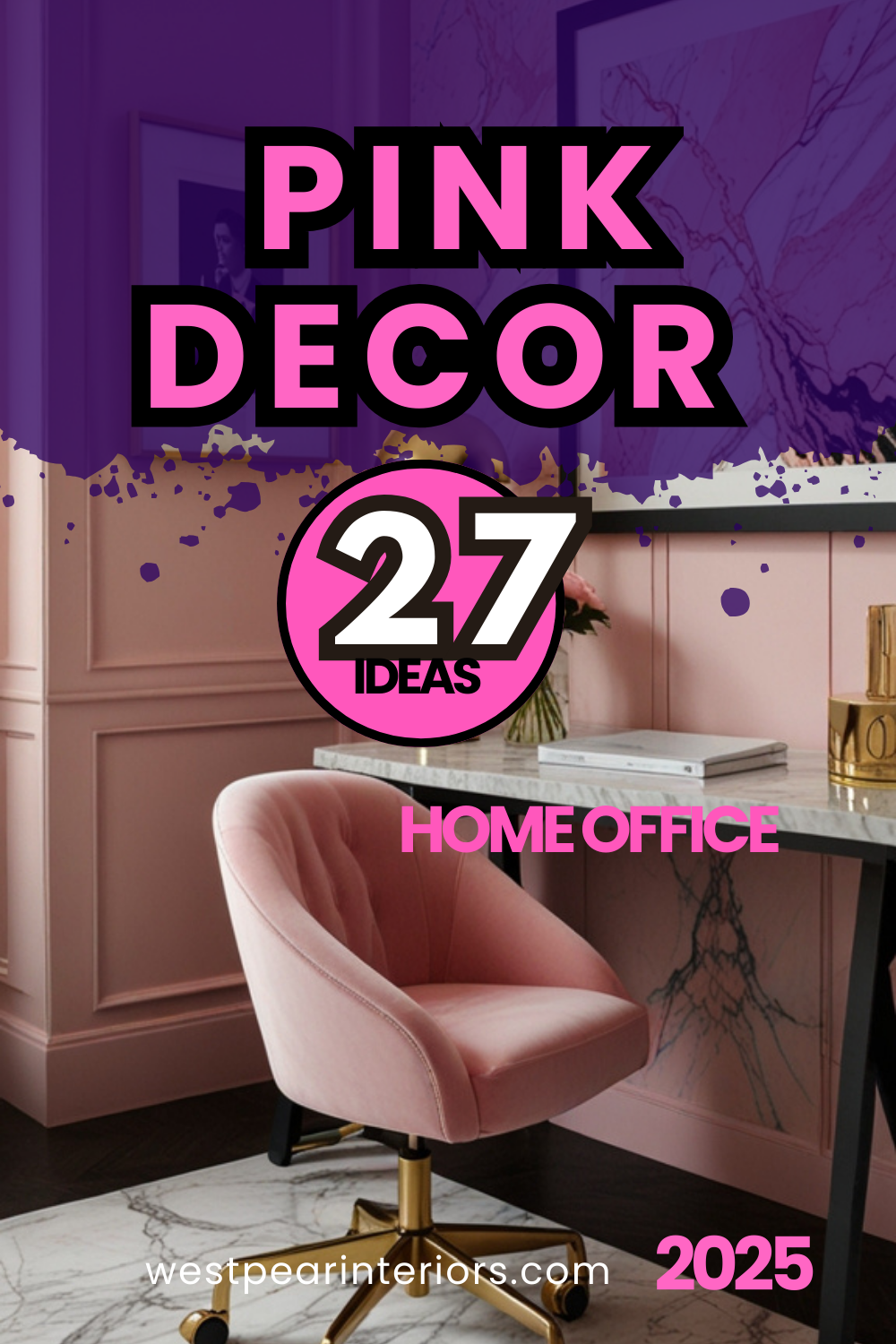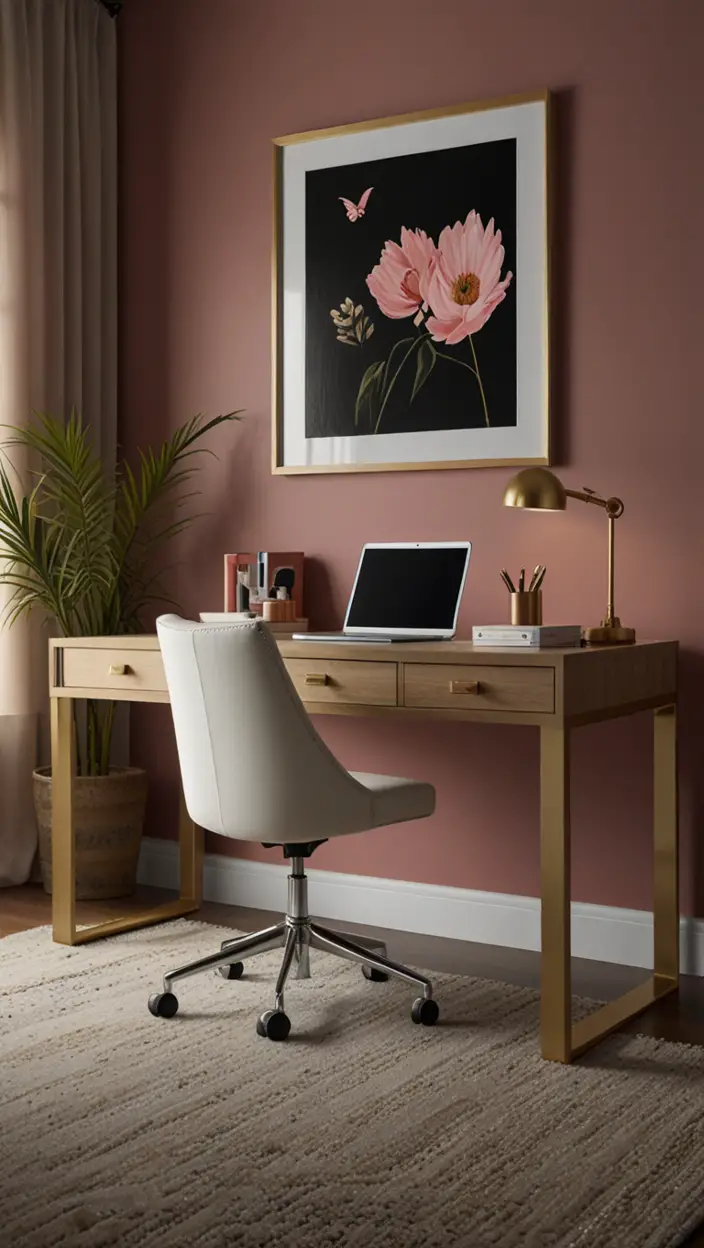Unlock the secrets to using color to transform your home office into a captivating space that enhances productivity and creativity.
Using color to create a focal point in the home office is essential for a harmonious and inspiring workspace. To achieve this, start by selecting a bold color that contrasts with the rest of the room. This will draw attention to the focal point and make it stand out. Consider painting one wall in a vibrant hue or adding a colorful piece of furniture or artwork. Make sure the chosen color complements the overall color scheme of the room to create a cohesive look. Additionally, using different shades of the same color can create depth and interest. Experiment with color swatches and consult with a professional if needed to ensure a successful outcome.
Creating a focal point in a home office through color is essential for enhancing the overall aesthetic and functionality of the space. Here are some key considerations and strategies to effectively use color to create a focal point in your home office:
1. Colors for Focal Point:
My Lovely Spring Paint for 2025
Ready for a Spring Makeover? Explore the Freshest 2025 Paint Trends!
White Sage/Green SW Pistachio green Soft blue Honeysweet/Orange Pink Sugar Sage Tint BMAs an Amazon Associate, I may earn a commission from qualifying purchases at no extra cost to you.
Choosing the right colors is crucial when creating a focal point in a home office. Bold and vibrant colors such as red, deep blue, emerald green, and mustard yellow work best for drawing attention and creating visual interest. These colors can be strategically incorporated through accent walls, furniture pieces, or decorative items to establish a focal point.
2. Making a Small Home Office Feel Spacious:
To make a small home office appear more spacious, opt for light and airy colors such as soft blues, greens, and neutrals. Painting the walls in light shades can help reflect natural light and create a sense of openness. Additionally, incorporating mirrors, minimalistic furniture, and adequate lighting can enhance the perception of space in a compact home office.
3. Using Different Hues for Cohesive Look:
You can create a cohesive look in your home office by using different hues of the same color family. For example, pairing light and dark shades of blue or gray can add depth and visual harmony to the space. Mixing various hues allows for a coordinated color scheme while adding dimension and interest.
4. Alternative Paint Options:
My fAV Spring DECOR for 2025
Discover Spring’s Best 2025 Decor Combinations – Perfect for Any Room!
Oversized Indoor Plants White Curved Sofas Rugs BOH Brown Cream Moroccan Hype Boho Rug Outdoor Patio Furniture Sets Topfinel Pillow CoversAs an Amazon Associate, I may earn a commission from qualifying purchases at no extra cost to you.
In addition to traditional wall paint, consider alternative options such as textured finishes, wallpaper, or accent decals to create a focal point in your home office. Textured wall surfaces or statement wallpapers can add a unique touch and serve as a standout feature in the room.
5. Matching Furniture and Decor:
While it is not necessary to match the color of your furniture and decor with the focal point, harmonizing the color palette is essential for a cohesive look. Opt for complementary colors or shades that blend well with the focal point to maintain visual balance and coherence in the home office design.
6. Promoting Focus and Productivity:
To ensure that the color scheme in your home office promotes focus and productivity, consider the psychological effects of colors. Blue is known to enhance concentration, green fosters a sense of calmness, and yellow boosts creativity. Incorporate these colors strategically in areas where you work or brainstorm to create an environment conducive to productivity.
7. Tips for Staying Organized:
When incorporating color into your home office design, organization is key to maintaining a functional workspace. Use color coding for files, storage bins, and desk accessories to categorize items effectively. Implementing a decluttering routine and investing in multifunctional furniture can help maximize space and keep the office organized.
Additional Information:
To further enhance the use of color in creating a focal point in your home office, consider the following tips:
– Use color psychology to evoke specific emotions and enhance the functionality of the workspace.
– Experiment with various color combinations and patterns to find the perfect balance for your home office design.
– Incorporate natural elements such as plants or wooden accents to complement the color scheme and create a soothing environment.
– Seek inspiration from interior design trends and consider professional advice for personalized color recommendations.






